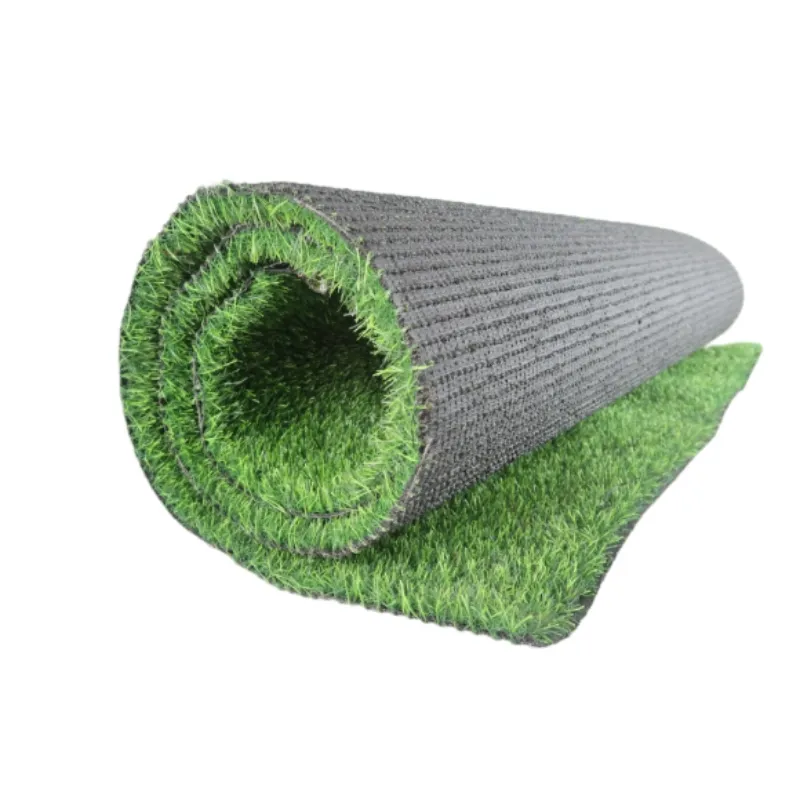
- Afrikaans
- Arabic
- Belarusian
- Bengali
- Czech
- Danish
- Dutch
- English
- Esperanto
- Estonian
- Finnish
- French
- German
- Greek
- Hindi
- Hungarian
- Icelandic
- Indonesian
- irish
- Italian
- Japanese
- kazakh
- Rwandese
- Korean
- Kyrgyz
- Lao
- Latin
- Latvian
- Malay
- Mongolian
- Myanmar
- Norwegian
- Persian
- Polish
- Portuguese
- Romanian
- Russian
- Serbian
- Spanish
- Swedish
- Tagalog
- Tajik
- Thai
- Turkish
- Turkmen
- Ukrainian
- Urdu
- Uighur
- Uzbek
- Vietnamese
artificial grass field
Nov . 17, 2024 04:30 Back to list
The Rise of Artificial Grass Fields Revolutionizing Sports and Landscaping
In recent years, artificial grass fields have witnessed a remarkable surge in popularity across various sectors, particularly in sports and landscaping. These synthetic turf installations are transforming how we think about outdoor spaces, offering numerous benefits over traditional natural grass. As technology continues to advance in the field of synthetic materials, understanding the implications and advantages of artificial grass fields becomes essential.
Benefits of Artificial Grass in Sports
One of the most prominent applications of artificial grass is in sports. Athletic facilities, from local parks to professional stadiums, are increasingly opting for synthetic turf. The reasons for this trend are multifold.
Firstly, artificial grass fields are incredibly durable. They can withstand heavy foot traffic, weather fluctuations, and rough play much better than natural grass. This durability translates to a longer lifespan, significantly reducing maintenance costs associated with mowing, watering, and fertilizing natural grass. For instance, professional soccer and football teams have embraced artificial turf to maximize their training and game opportunities, especially in regions prone to harsh weather conditions.
Additionally, artificial grass provides a consistent playing surface, minimizing the risk of uneven patches that can cause injuries. This uniformity allows athletes to perform at their best without worrying about potential hazards that come with natural grass fields, such as mud or uneven ground. As a result, numerous tournaments and leagues have adopted artificial turf, recognizing its role in promoting player safety and optimal performance.
Environmental Considerations
While some may argue that artificial grass contributes to environmental issues, advancements in eco-friendly synthetic materials are addressing these concerns. Modern artificial grass is designed to be more sustainable, utilizing recyclable materials that minimize environmental impact. Furthermore, these fields eliminate the need for harmful pesticides and fertilizers traditionally used on natural grass, promoting a more environmentally friendly approach to landscaping and sports.
Water conservation is another significant advantage of artificial grass fields. In an era where water scarcity is becoming an increasingly pressing concern, synthetic turf requires no irrigation. This feature is particularly beneficial in drought-prone regions where water resources are limited. Installing artificial grass not only conserves water but also contributes to a more sustainable ecosystem by reducing reliance on chemical treatments and extensive irrigation systems.
artificial grass field

Aesthetic Appeal and Versatility
Beyond sports, artificial grass fields are making their mark in residential and commercial landscaping. Homeowners are leveraging the aesthetic appeal of synthetic turf to create beautiful lawns that require minimal maintenance. With a variety of styles and colors available, artificial grass can mimic the look of natural grass while remaining lush and vibrant year-round.
Moreover, artificial grass is incredibly versatile. It can be installed in various settings, including playgrounds, pet areas, and even rooftops. This adaptability makes it an attractive option for urban areas where traditional landscaping can be challenging due to space constraints or environmental factors.
Challenges and Future Prospects
Despite these numerous benefits, the rise of artificial grass fields is not without challenges. Concerns about heat retention, especially in warmer climates, have prompted manufacturers to develop cooler, more breathable materials. Additionally, there is an ongoing debate about the environmental impact of synthetic materials, emphasizing the need for more research and innovation in this field.
Looking forward, the future of artificial grass fields appears promising. As technology continues to evolve, we can expect to see even more advanced materials that offer enhanced performance and sustainability. Furthermore, as environmental awareness grows among consumers, the demand for eco-friendly alternatives is likely to drive further innovation in the industry.
Conclusion
In conclusion, artificial grass fields are revolutionizing the way we engage with outdoor spaces, offering numerous advantages in sports, landscaping, and beyond. With their durability, sustainability, aesthetic appeal, and versatility, synthetic turf installations are rapidly becoming the preferred choice for many. As we continue to explore the potential of artificial grass, it is clear that this innovation will play a crucial role in shaping the future of both our sports facilities and our landscapes.
-
The Benefits of Artificial Turf for Indoors
NewsJul.15,2025
-
How Artificial Grass Suppliers Ensure Quality Products
NewsJul.15,2025
-
Artificial Grass and Pets: A Space for Relaxation
NewsJul.08,2025
-
Balcony & Outdoor Decoration with Artificial Grass
NewsJul.08,2025
-
Best Indoor Artificial Grass for Home
NewsJul.07,2025
-
Best Pet Turf for Dogs: Safe & Durable Artificial Grass Options
NewsJul.07,2025
Products categories









